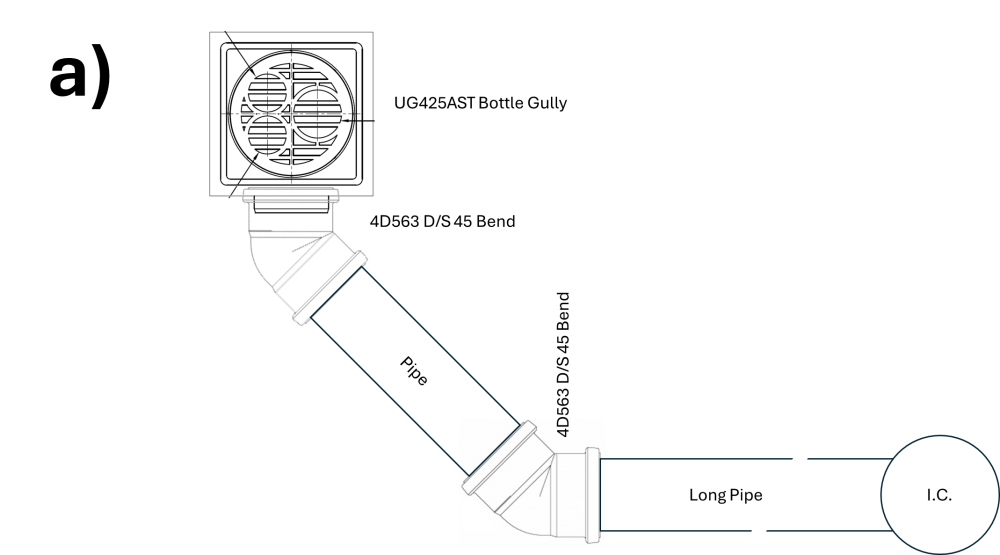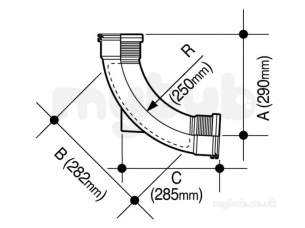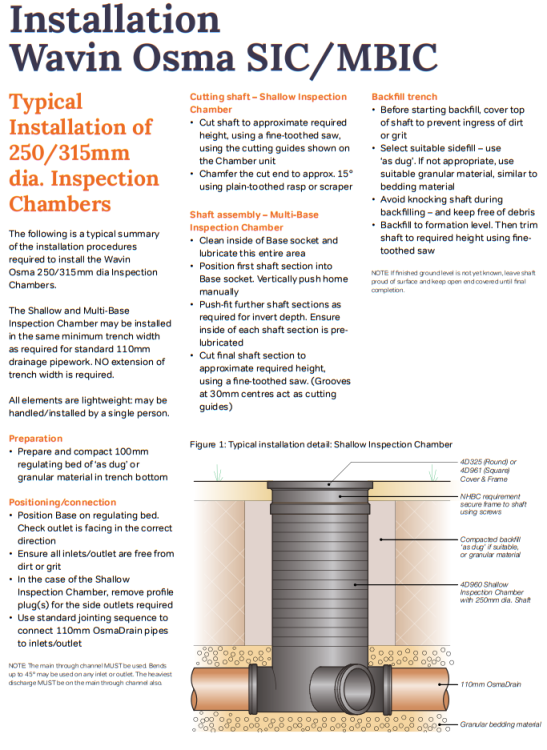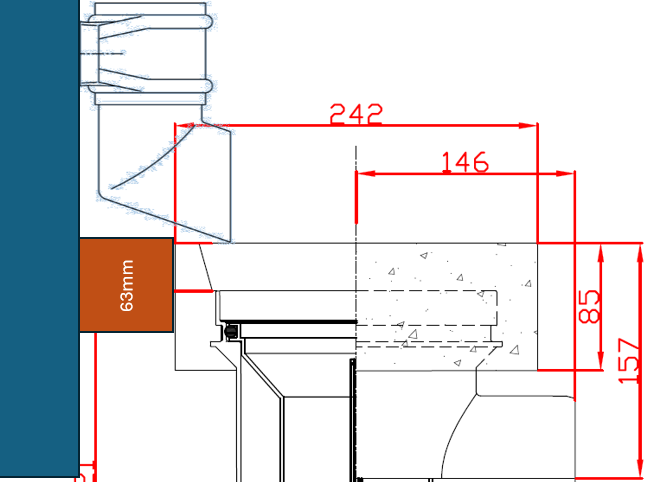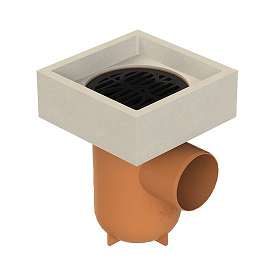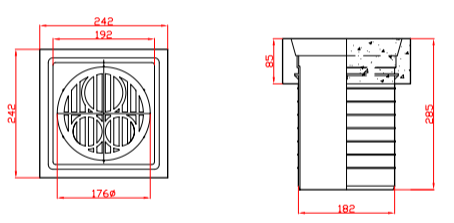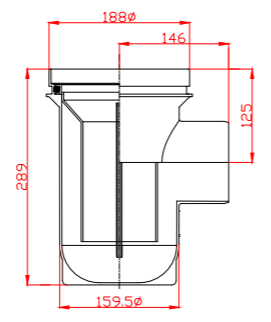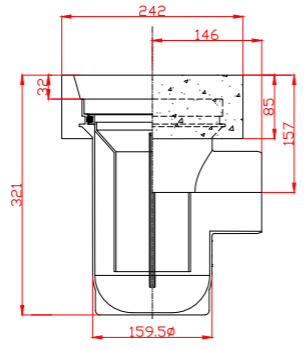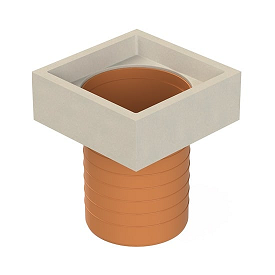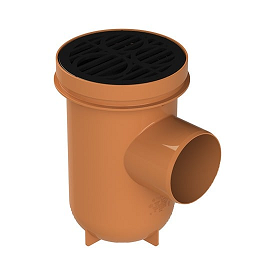
MortarThePoint
Members-
Posts
2158 -
Joined
-
Last visited
Everything posted by MortarThePoint
-
Loads of colours available to add to white cement. White cement is more expensive (2x I think) but small difference Vs labour costs. If achieving the colour using an additive rather than sand, check how consistent it will be. The brickie's labourer may vary the dose and that could create banding. There is an expensive new college building I see in Cambridge and it's a dogs dinner due to this issue I think. You can influence the colour a lot with choice of sand and that should be more consistent as long as everyone understands. I'd be cautious of going the lime route. Fewer brickies have experience with it and it can be less tolerant (e.g. temperature). In the right hands it's great and looks brilliant though.
-
Rainwater Drainage Basics
MortarThePoint replied to MortarThePoint's topic in Rainwater, Guttering & SuDS
It's really a struggle to maintain 1:100 with a couple of turns. I've wondered about sending the (remaining) furthest downpipe (at 27m) on that run into a channel drain going along the edge of the house. That runs at the surface and you can get a 110mm end cap. That would buy me about 40mm if the channel was laid with a 1:100 fall or 80mm if laid level. 80mm would allow the remaining 22m to fall at (425 - 110 - 25) : 22000 = 1:76. A channel drain here is a bit random though. -
I was thinking the other day that a poor tiler can make expensive tiles look cheap, a good tiler can make expensive tiles look expensive but a great tiler can make cheap tiles look expensive. Hard to be sure, but from the picture the tiles themselves look fine.
-
I need to turn 90 degrees from my bottle gully without using an inspection chamber for the turn and see two main options for it: (a) use a 45 degree bend on the bottle gully and then a second 45 bend before the long pipe run (~5m). (b) use a rest bend either directly on the bottle gully or after a coupler and short length of pipe (will depend on trench position). Both should be roddable since the bottle gully can be rodded and there is an Inspection Chamber (I.C.) at the end of the long pipe (~5m). Can't you rod through a rest bend? If so, I lean towards option (b). (b) is also cheaper as I have a spare rest bend. What do others think? For full disclosure, the I.C. is a 4D960 shallow one and has two S/S 45 bends on it as it is at the corner of the house so the pipe turns. All these pipes will be paved over.
-
Rainwater Drainage Basics
MortarThePoint replied to MortarThePoint's topic in Rainwater, Guttering & SuDS
I'm a little disappointed to end up with Bottle Gullies rather than rest bends due to levels. I suspect Bottle Gullies could be a breeding ground for mosquitoes. -
For long straight runs, socketed pipes are useful though and have fewer seals. I've gone with Osma fittings and pipes. A pipe and coupler works out about £3 more than a socketed Floplast pipe. I asked and Floplast didn't recommend using the socket of a pipe as one of the sockets of a rocker pipe.
-
I have Osma rest bends which have an invert 290+50=340mm below top of socket. Clearance to house makes this run about 20m, call it 21m which would be a 350mm drop at 1:60. If I have the 250mm chamber 50mm below the 450mm chamber's invert (600mm bgl), that would be a depth of 650mm. It's not a compliant depth for that 250mm chamber, but BCO was OK with a junction so I can just bury the chamber under a removable slab. The invert at the rest bend would be 650 - 350 = 300mm bgl so the rest bend's socket will stick out of the ground. I'll paint that black. Should work, but have to check fall to STP to confirm. Top of pipe at the rest bend will be 190mm bgl, falling to 190 + (8,000/60) = 323mm at the turn. The rainwater pipe it needs to cross will have an invert depth of about 175 + (5,000/100) = 225mm or 175 + (5,000/80) = 238mm at this point, so 100mm or 85mm clearance between pipes. Rainwater pipe invert after 20m needs to be 425mm and can start at 175mm, so may be 1:80. Osma rest bend:
-
Rainwater Drainage Basics
MortarThePoint replied to MortarThePoint's topic in Rainwater, Guttering & SuDS
You'd hope. Osma in general does seem well made but certainly carries a premium. -
Rainwater Drainage Basics
MortarThePoint replied to MortarThePoint's topic in Rainwater, Guttering & SuDS
Sadly the only ideal world exists on the drawing board. I'm working to eliminate as much as I can. -
Rainwater Drainage Basics
MortarThePoint replied to MortarThePoint's topic in Rainwater, Guttering & SuDS
[couldn't fix the edit] I'm using Osma fittings so it would be their adjustable bend. Theirs and some others don't have anything you can tighten. -
Rainwater Drainage Basics
MortarThePoint replied to MortarThePoint's topic in Rainwater, Guttering & SuDS
I'm using Osma fittings so it would be their adjustable bend. Theirs and some others don't have anything you can tighten. Aiyden Project had a nightmare with his Floplast ones which can be tightened, though I've seen a video that says they come pre tightened if you believe that. Floplast's adjustable output inspection chambers look cool, but I'd be nervous of leaks if using them. -
Rainwater Drainage Basics
MortarThePoint replied to MortarThePoint's topic in Rainwater, Guttering & SuDS
I've read elsewhere that adjustable bends "always leak". Is there any truth to that? -
Rainwater Drainage Basics
MortarThePoint replied to MortarThePoint's topic in Rainwater, Guttering & SuDS
I have a Roughneck Tamp from previous adventure thankfully. In other sections of the trench, it is passing through areas where I had covered the foundation back fill with a very generous layer of MOT for the scaffolding to sit on. -
Rainwater Drainage Basics
MortarThePoint replied to MortarThePoint's topic in Rainwater, Guttering & SuDS
@Nickfromwales I've got a bit carried away digging the trenches on my own and didn't notice that at the far end of one branch the starting ground level hasn't yet been brought up to final ground level. It was also soft soil here so easy digging. The upshot is that for the first section I have dug the trench about 200mm deeper than needed (so 300mm below bottom of pipe). I have loads of 10mm gravel as I had a tipper load rather than grab bags. What should I do: Mistake is no issue, just fill trench with 10mm gravel all the way up to underside of pipe, lay pipe as normal Fill trench to the depth I should have dug to (100mm below pipe) with 10mm gravel in 100mm layers, tamp between fills. Then lay pipe a normal Fill trench to the depth I should have dug to (100mm below pipe) with as dug soil in 100mm layers, tamp between fills. Then lay pipe a normal Fill trench to the depth I should have dug to (100mm below pipe) with MOT rich soil in 100mm layers, tamp between fills. Then lay pipe a normal Thankfully this is for the shorter branch that is going to be 1:80 fall. There is a 250mm inspection chamber in this section though. -
Rainwater Drainage Basics
MortarThePoint replied to MortarThePoint's topic in Rainwater, Guttering & SuDS
placing bottle gullies onto a paving slab is a good idea and then haunching with concrete to help keep it in place. 4D960 250mm chambers can be placed bedded in gravel, but I may use slabs to help achieve the levels needed (though could use a non-sharp brick instead as long as granular will is all around. -
Rainwater Drainage Basics
MortarThePoint replied to MortarThePoint's topic in Rainwater, Guttering & SuDS
Osma 4D960 250mm inspection chamber has its inverts about 6mm above the main body bottom and about 13mm / 0.5" above the outer surface of the ring seal's plastic outer. -
Rainwater Drainage Basics
MortarThePoint replied to MortarThePoint's topic in Rainwater, Guttering & SuDS
Polypipe UG425 has an output invert level 289 - 125 - ((110/2) - 3.2) = 112.2mm above its base. [3.2 based on OSMA pipe wall thickness] That's 176.8mm below its top rim. -
Rainwater Drainage Basics
MortarThePoint replied to MortarThePoint's topic in Rainwater, Guttering & SuDS
This is probably the only configuration that might allow the trap insert to be removed without having to remove the downpipe shoe and likely the lowest downpipe section too. That should be an uncommon event, but worth bearing in mind. That said, the trap insert locates in a pair of guide slots so I think it would have to travel directly upwards so would probably still clash with the shoe. I checked and the trap insert can be removed through the UG427RAST extension piece. -
Rainwater Drainage Basics
MortarThePoint replied to MortarThePoint's topic in Rainwater, Guttering & SuDS
Polypile UG425AST has an invert at 85 - 157 - 50 = -122mm relative to the bottom of the concrete surround, but the outlet can't rotate relative to the concrete. An alternative is to use UG425 in conjunction with UG427RAST which is an extension with concrete surround. That combination has a minimum invert at 32 - 157 - 50 = -175mm relative to the bottom of the concrete surround. Note that is the same as without using the concrete surround addition since in its lowest position it would sit on the rim of the bottle gully (UG425). The maximum invert would be about -(285-85) - (125 - 20) - 50 = -355mm. When used on a patio, UG425AST would likely need to have its concrete surround's bottom level with or lower than the underside of the patio paving to allow enough clearance between paving and outlet pipe (157 - (132/2) - 85 = 6mm to the OD of a ring seal and 157 - (110/2) - 85 = 17mm to the OD of a 110mm OD pipe). Interestingly, the combination of UG425 + UG427RAST is cheaper than UG425AST and certainly cheaper than that with a subsequent bend to get the correct outlet angle (though that bend could save a coupler). UG425.pdf UG425AST.pdf UG427RAST.pdf -
Rainwater Drainage Basics
MortarThePoint replied to MortarThePoint's topic in Rainwater, Guttering & SuDS
Looking to use the Polypipe bottle gully with concrete antisplash surround (UG425AST). It's not cheap (~£50) but finishes things quite neatly. I had intended to use the concrete hopper (UG414AST) which has a square grate, but that has a 110mm vertical outlet that I would have sent into a rest bend but for levels. I just need to decide how far to position it from the wall. Pulled away from the wall slightly would make access easier but leave a gap between the wall which would need dressing. If water blasted out of the downpipe it could in theory overshoot the concrete surround if it is too far back, but that feels pretty unlikely. Positioned with concrete surround touching the wall, shoe dipping below the top of the concrete: Positioned with concrete surround 25mm from the wall, bottom of shoe level with top of concrete: Positioned with concrete surround 63mm from the wall so that shoe is just over the grate, bottom of shoe level with top of concrete: -
Rainwater Drainage Basics
MortarThePoint replied to MortarThePoint's topic in Rainwater, Guttering & SuDS
If I needed to, I suppose I could use a section of 82mm (OD) drainage pipe where the invert is really shallow, but I'd rather not. 75mm (ID) pipe at 1:100 has a capacity of about 2.7L/s which would be enough for one downpipe (standard 63mm ID / 68mm OD downpipe has a capacity of 1.11 L/s according to Part H Table 2 page 40). It would buy me an extra 28mm of headroom, so shallowest top of pipe would 78mm rather than the 50mm with 110mm pipe. I guess it depends a bit on the make up of the patio whether that additional depth is needed. If it is, replacing the first 3m would be enough since it would drop 30mm (@ 1:100) in that distance. -
Rainwater Drainage Basics
MortarThePoint replied to MortarThePoint's topic in Rainwater, Guttering & SuDS
Bottle Gullies have an output reasonably near the surface, though a P-trap is probably the best for that. Of the bottle gullies, UG425 from polypipe has the shortest distance between top of grate and output invert at 175mm (Osma 4D900 207mm, Floplast D515 262mm). The spigot output of Polypipe UG425 looks to be at least 60mm long which is greater then the insertion depth of most ring seal couplers 175mm + (27000/100) = 445mm so should be workable with 1:100 over 27m and an end invert of 425mm (would stick up 20mm). -
Rainwater Drainage Basics
MortarThePoint replied to MortarThePoint's topic in Rainwater, Guttering & SuDS
That's a good thought as then it can't drift down in some spots and cause issues. I had wondered about sharing a trench for part of this section, but that feels like it's asking for problems and would stop me from adding any intermediate concrete supports since this pipe will be the higher of the two.



